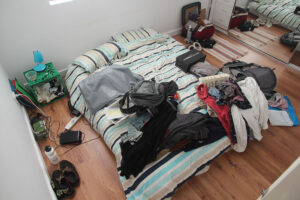
Moving into a smaller space may be a stressful experience in and of itself. It necessitates the use of outside resources as well as a number of do-it-yourself projects. The most difficult aspect of relocating is usually the labor involved in packing your stuff into boxes, loading them into the vehicle, transporting them to your new location, and then unpacking everything. But what if the new place you’re relocating to isn’t large enough to accommodate all of your belongings? Downsizing or relocating into a smaller location can make an already tiresome and unpleasant process much more stressful.
There is, however, a straightforward solution to your difficulty. Get rid of some of your belongings! Yes, it is easier said than done, but by following these easy guidelines, you can make the process less frightening, and you will find yourself moving into your new home lighter and happier than ever before.
Make sure to organize your items before you start packing. You won’t be compelled to throw away undesired items at the last minute – or, even worse, take them with you. You’ll have plenty of time to consider what to keep and what to throw, as well as come up with a creative solution for your unwanted possessions.
Sorting items into distinct piles is the finest way for assisting you with the task. Keep in mind that what you want and what you require are not the same thing. We frequently find ourselves clinging to items that we do not require.
Sort your belongings into different categories (e.g., clothing, kitchen items, necessities, etc.). This will enable you to easily identify locations that have become excessively and unnecessarily cluttered over time. Divide the piles into three categories: what you need, what you want to donate or sell, and what you need to get rid of. If you haven’t used something in the last year, it’s probably time to toss it into the “Do Not Need” bin.
Just because a piece of wall art looks fantastic in your existing home doesn’t imply it will work in your new place. Also, take measurements of your new location to guarantee that the furniture will fit properly. Consider what will go where and how your stuff will fit in each room, as well as the closets. It will be easier to get rid of some of your old belongings if you realize what does not belong.
If you’ve inherited identical clothing, cookware, or just some extra old furniture, you might want to try sharing things with your family and friends. An old piece of furniture that belonged to a deceased relative might be appreciated by a family member. Alternatively, if you and your closest buddy have similar clothing tastes and are the same size, they may be able to put some of your old things to good use.
Also Read :Tips When Moving Large Furniture

Selling used stuff is a terrific way to supplement your income. Keep in mind, however, that if you lack the necessary resources, this can be a time-consuming and difficult task. If you live in a nice neighborhood that enjoys yard sales, this is perhaps the simplest and most efficient way to sell your unwanted stuff. You can also list your products on the internet, which normally requires a full description and at least one photo. Clothing might be difficult to sell online. As a result, it’s better to see whether a local secondhand clothing store can trade you something for them.
You can also sell your old stuff on eBay, Facebook groups, and other online marketplaces. If you’re practicing green living, another fantastic alternative is to recycle some old furniture and other great items.
Before you throw out that toy that your child has outgrown or that old CD collection that you no longer listen to, consider the phrase “one man’s trash is another man’s treasure.” You can donate to a variety of organizations instead.
For example, the Red Cross and even your local library will gladly accept your unwanted stuff (in fact, some of these places will even collect items from your doorstep if needed). Another thoughtful suggestion is to put your unwanted items in a box with a “Free” sign on it and leave it on your neighborhood’s sidewalk. It’s likely that you’ll wake up to an empty box the next morning, with someone else enjoying their “new” tea set.
When downsizing, it may be more cost-effective to store your unwanted belongings in a storage facility rather than discard or sell them. This is especially important if you are having repairs done to your house and will only be living in a smaller space for a short period of time. Alternatively, there may be some items that do not fit in your new home but have sentimental importance. Whatever the situation may be, short-term or long-term storage options are a far better option than packing your home to the gills with furniture or stuff you won’t use.
No one really needs 40 pairs of shoes, 20 linens for their bedroom, or enough tableware to feed an army. Most likely, you use the same products on a regular basis, while the others collect dust in a corner. Be practical about what you require, consider the moving procedure before you relocate, and avoid becoming emotionally connected to the items you are discarding. Downsizing your home and living with only the stuff you genuinely require on a daily basis can help you break free from the materialistic world, and it will undoubtedly make the transition to a smaller area much easier.
Related Articles:





